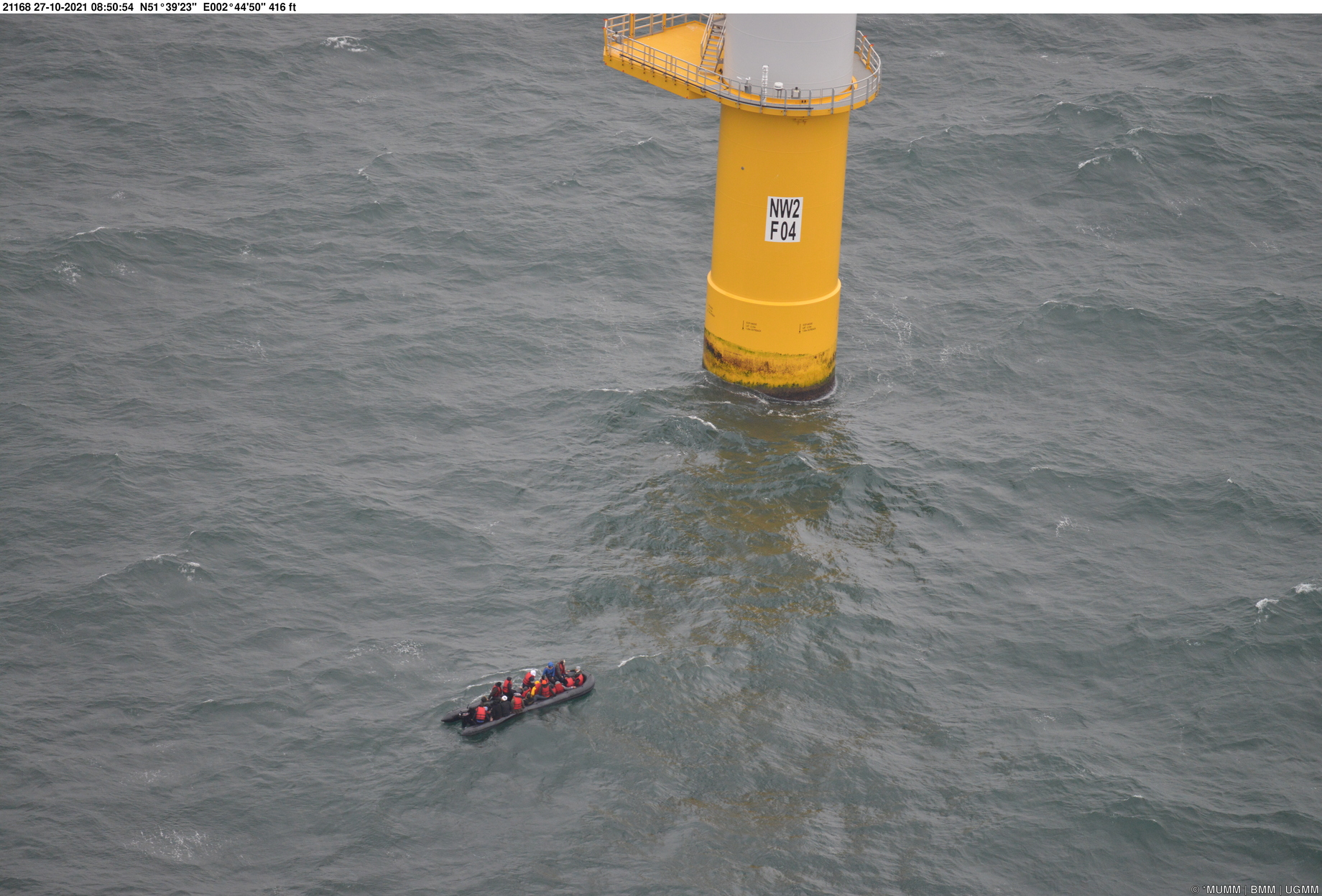In 2021, the Royal Belgian Institute of Natural Sciences (RBINS) performed a total of 248 flight hours over the North Sea in the framework of the national programme of aerial surveys. Thirteen cases of operational discharges by ships have been observed. Additionally, suspected sulphur values have been measured in the smoke plumes of 16 vessels, while 23 vessels had suspected nitrogen values in their exhaust plumes. In 2021, a black carbon sensor was added to the sniffer setup to measure the amount of black carbon in ship emissions as well. With this capacity expansion, Belgium keeps on playing an international pioneering role in the field of ship emission monitoring. Notwithstanding the COVID-19 pandemic, the aircraft also successfully participated in an internationally coordinated surveillance mission of the oil and gas installations in the central part of the North Sea and an international pollution control mission in the Skagerrak Strait. Two seasonal marine mammal counts were carried out successfully. Additionally, the aircraft executed 2 on call flights in response to emergencies at sea: a collision between 2 vessels without pollution and a small power boat with transmigrants drifting at the windmill parcs.
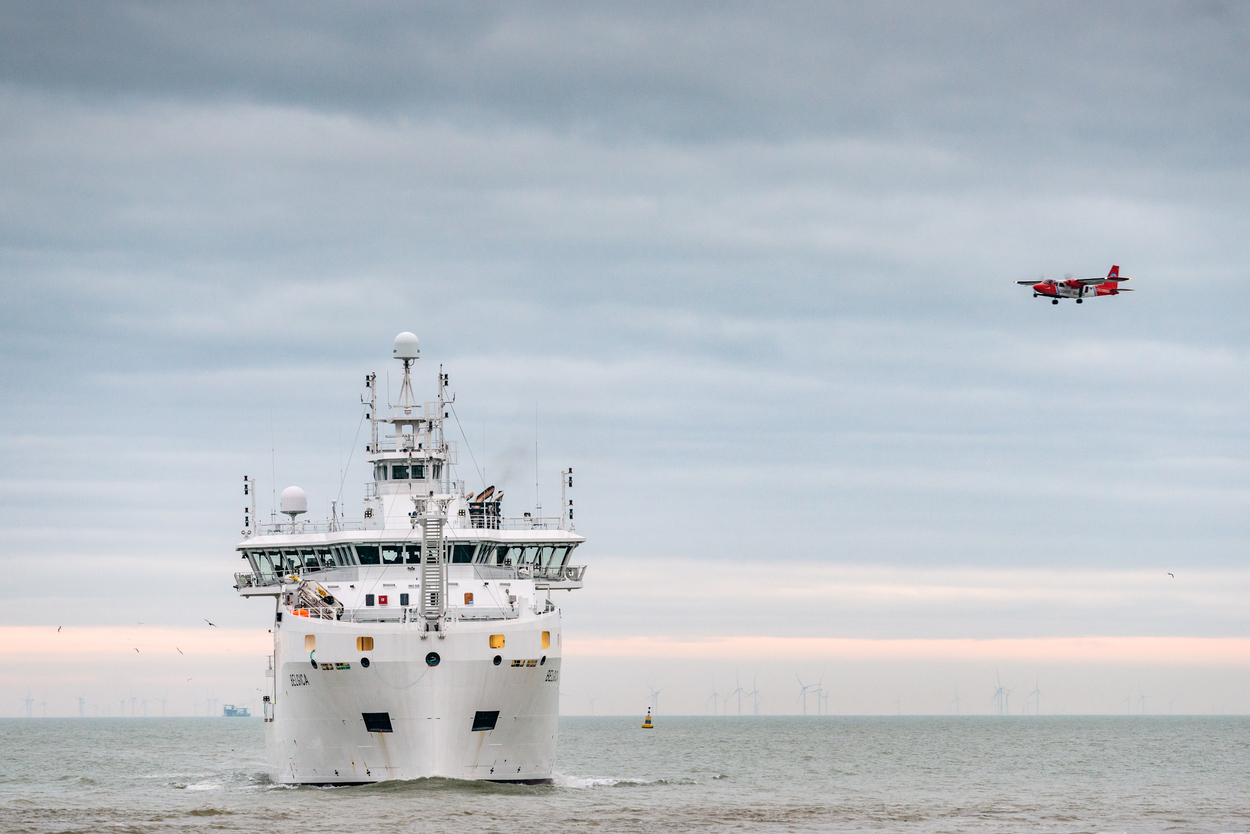
Overview of surveillance flights
A total of 248 flight hours have been performed in the framework of the national North Sea aerial survey programme in 2021. This programme is organised by the Scientific Service MUMM (Management Unit of the Mathematical Model of the North Sea) of the Royal Belgian Institute of Natural Sciences, in collaboration with the Ministry of Defence. Due to the elaboration and application of an extensive Covid-19 switching plan, the initially foreseen target of flight hours was reached, despite the Covid-19 pandemic.
Most of the flight hours were for national flights (177 hours):
- 168 hours in the context of the Belgian Coastguard:
- 119 hours for pollution control: 54 hours for the detection of discharges of oil and other harmful substances (MARPOL Annex I, II and V) and 65 hours for the monitoring of sulphur and nitrogen emissions from ships (MARPOL Annex VI/ SO2 and NOx ECA – Emission Control Area enforcement, see further);
- 45 hours for fishery control, on behalf of and in cooperation with the Flemish Fishery Inspection Services;
- 2 “on call” hours in response to specific alerts: a collision without pollution and a search for a small power boat with transmigrants drifting in the wind farms.
- 2 hours in the framework of a pollution combating exercise.
- 9 hours for marine mammal monitoring.
Additionally, 71 hours have been spent on international flights, of which 34 hours for the monitoring of sulphur and nitrogen emissions in Dutch waters on behalf of the Dutch Government (Human Environment and Transport Inspectorate) and, in the framework of the BONN Agreement, 19 hours for the Tour d’horizon-mission for aerial surveillance of offshore oil and gas installations in the North Sea and 18 hours for the Super-CEPCO mission, a mission to monitor discharges from ships in the Skagerrak Strait.
Operational discharges from ships
Since no accidental pollution took place in the Belgian sea areas in 2021, only operational ship discharges were observed. No operational oil pollutions were observed. These are deliberate discharges, which can be either legal or illegal, as stipulated in the various annexes to the MARPOL Convention.
None of these cases involved proven operational oil contamination. This is a confirmation of the decreasing trend in the figures showing that the number of oil pollutions has been greatly reduced in the last decade (see graph below).
Additionally, no violations with regard to Annex V of the MARPOL legislation related to the discharge of garbage and solid bulk materials were observed.
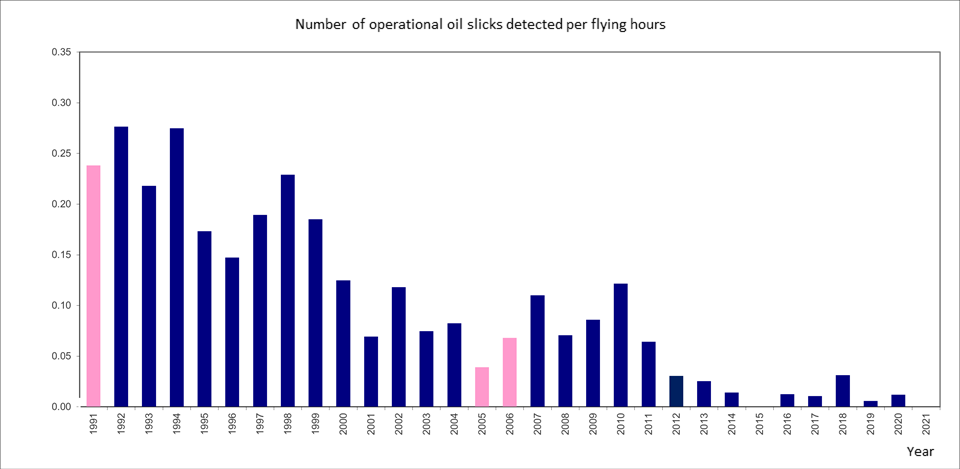
Thirteen cases of operational pollution from ships were observed:
- Eleven contaminations by hazardous liquids other than oil (MARPOL Annex II), one of which could be linked to a ship. An inspection was requested in the next port of call, which showed that it concerned an authorized discharge of FAME (fatty acid methyl ester). Three of these contaminants were verifications by the aircraft of a satellite detection alert. This Clean Sea Net (CSN) satellite surveillance service is offered by the European Maritime Safety Agency (EMSA) and regularly sends alerts from satellite detections of possible marine contaminants in the Belgian surveillance area.
- 2 pollution detections on radar of an unknown (not visually verified) liquid, at night time. Both detections were also a verification of a CSN satellite detection alert. Feedback was provided to EMSA for each verification.
Contamination by harmful liquid substances other than oil is still a common problem, which, as reported in previous years, even appears to be on the rise (see next graph). It should be noted here that this often concerns legal discharges that are in accordance with international discharge standards, as contained in Annex II of the MARPOL Convention. Since 2021, the MARPOL Annex II discharge standards have also been tightened for so-called ‘persistent floaters’ such as paraffin-like substances, for which no violations were observed.
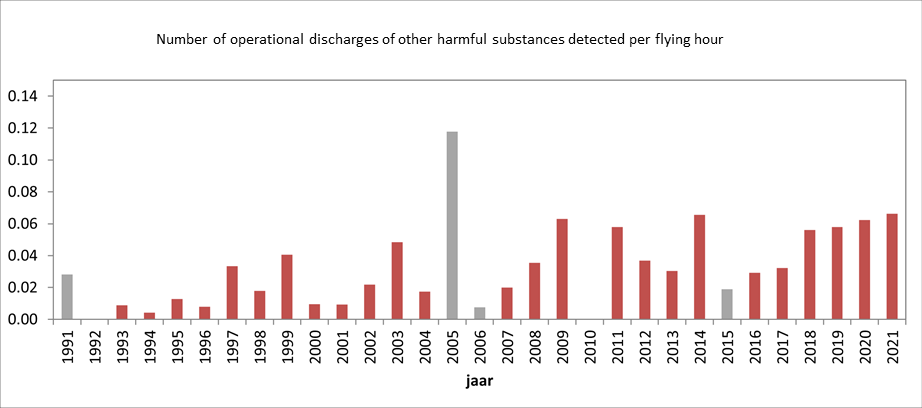
Oil pollution in Belgian ports and the Western Scheldt
During the transit flights from Antwerp airport (the aircraft’s home base) to the North Sea, two oil slicks were observed in the port of Antwerp, which could not be linked to a ship. In the port of Ostend 2 oil slicks were observed as well but again it was not possible to identify the polluter from the aircraft with certainty. All findings were immediately reported to the competent authorities to ensure follow-up.
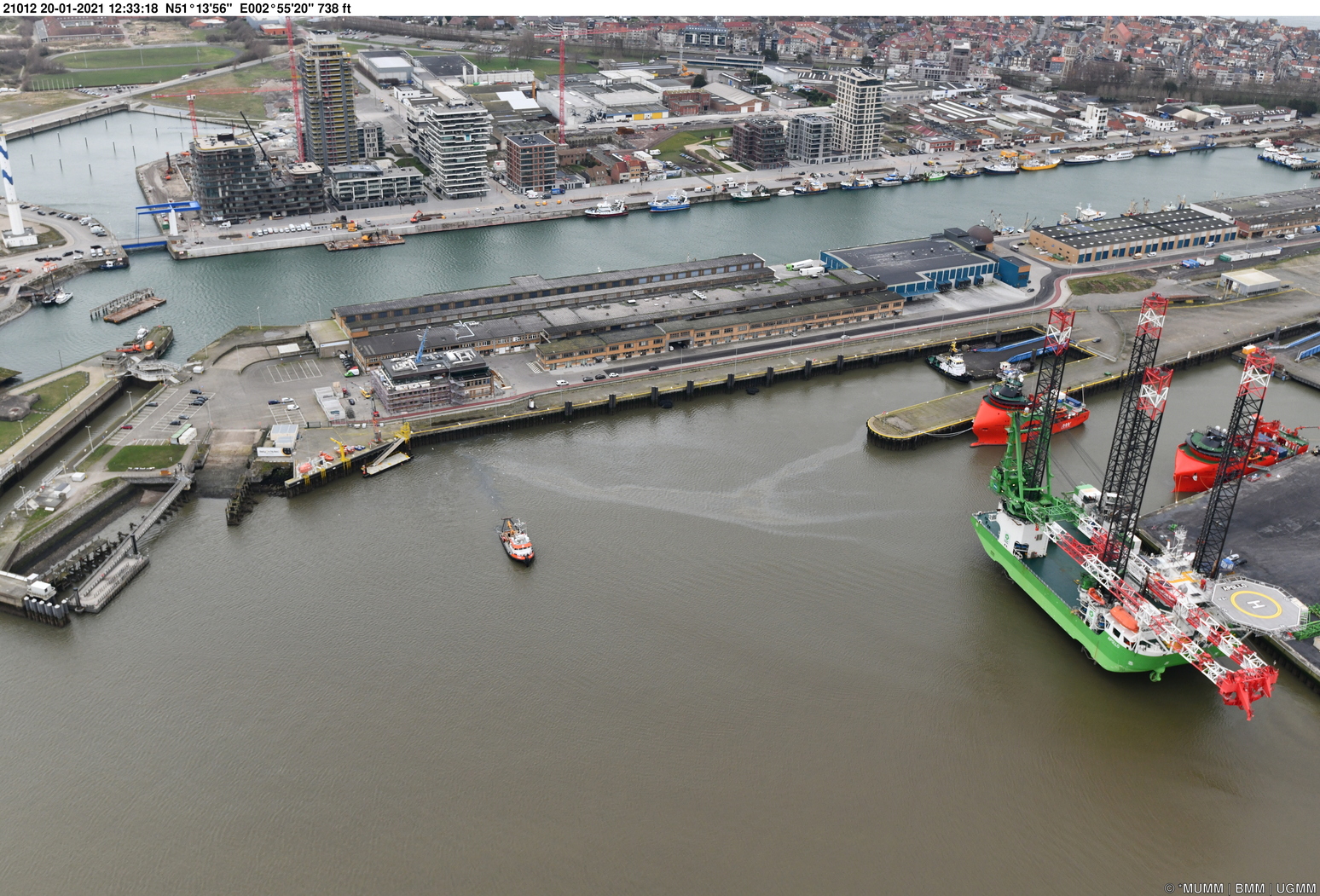
Monitoring of sulphur and nitrogen emissions from ships at sea
Due to application of a ‘sniffer’-sensor in the aircraft our country is known as a pioneer in the international combat against air pollution from ships at sea. The sensor makes it possible to measure multiple pollutants in the emissions of ships on site.
Sulphur measurements have been on the program since 2016. In order to monitor compliance with the stringent fuel sulphur content limits for ships sailing in the North Sea Emission Control Area, 57 sniffer fights (89 hours) were conducted in 2021, both above the Belgian surveillance area and the Dutch waters on behalf of the Dutch Government (Human Environment and Transport Inspectorate). Of the 1015 vessels of which the sulphur exhaust was measured at sea, 16 showed a suspiciously high sulphur value. These cases were systematically reported to the competent maritime inspection services for a further follow-up in port.
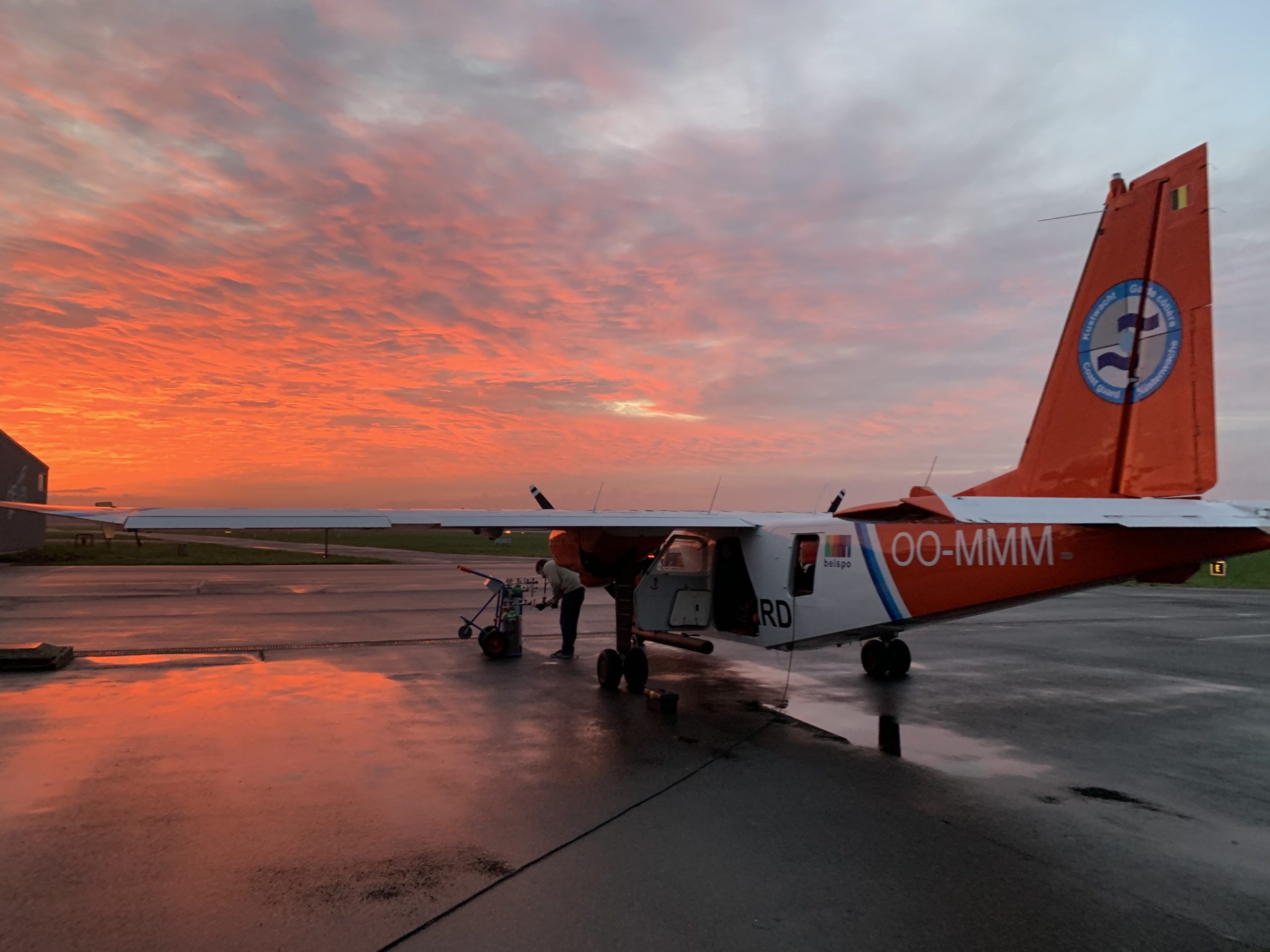
Due to the successful integration of a NOx sensor in 2020, the aircraft can also measure the concentration of nitrogen compounds (NOx) in the smoke plumes of ships to monitor and enforce the restrictions that apply in the North Sea from 1 January 2021 with regard to nitrogen emissions from ships. Belgium was the first country operationally ready to monitor and enforce these restrictions. In 2021 the nitrogen emissions of 1004 ships were inspected and 23 suspicious values were reported.
Since 2021, a new sensor has been added to the sniffer set-up: a black-carbon sensor. This sensor measures the amount of black carbon in the exhaust plumes of ships, which is a measure for the soot concentration. When exceptionally high soot concentrations are measured, the competent maritime port authorities are asked to take a fuel sample. These samples are analysed in the labs of MUMM in Ostend. With this black carbon sensor and oil sample analysis, new insights will be obtained about the role of the global shipping industry in the emissions of black carbon, which possibly might lead to international regulations to limit black carbon emissions in the future.
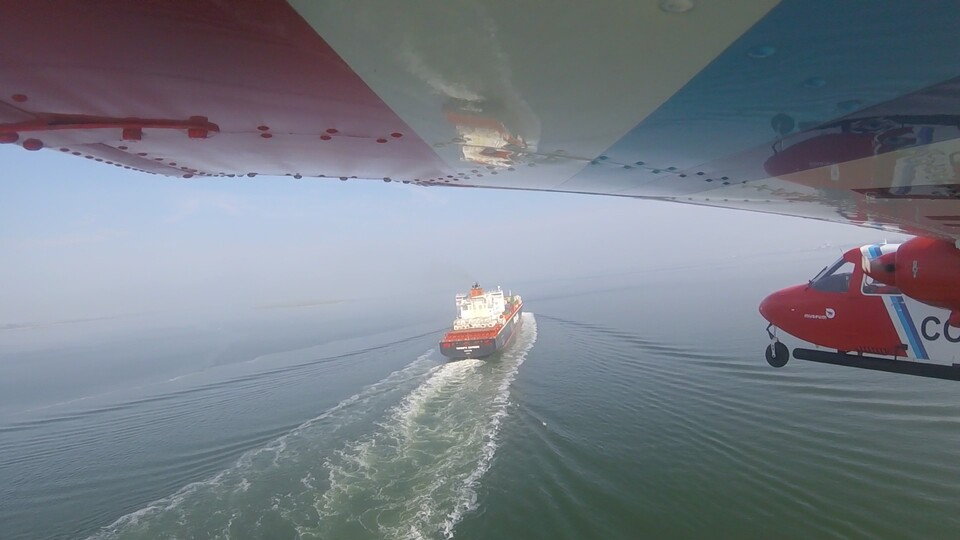
International ‘Tour d’Horizon’ mission
The annual TdH-mission for the surveillance of offshore platforms in the central part of the North Sea (in Dutch, German, Danish, Norwegian and British waters), performed in the framework of the Bonn Agreement, was conducted in July 2021. The Belgian surveillance aircraft detected 20 pollutions, of which 18 consisted of oil and 2 of an unknown liquid substance which could not be visually verified due to low clouds.
Nineteen spills could be directly linked to offshore installations. One oil spill could not be linked to a platform or ship. All detections were systematically reported for further follow-up to the competent Coastal State, in accordance with agreed international procedures.
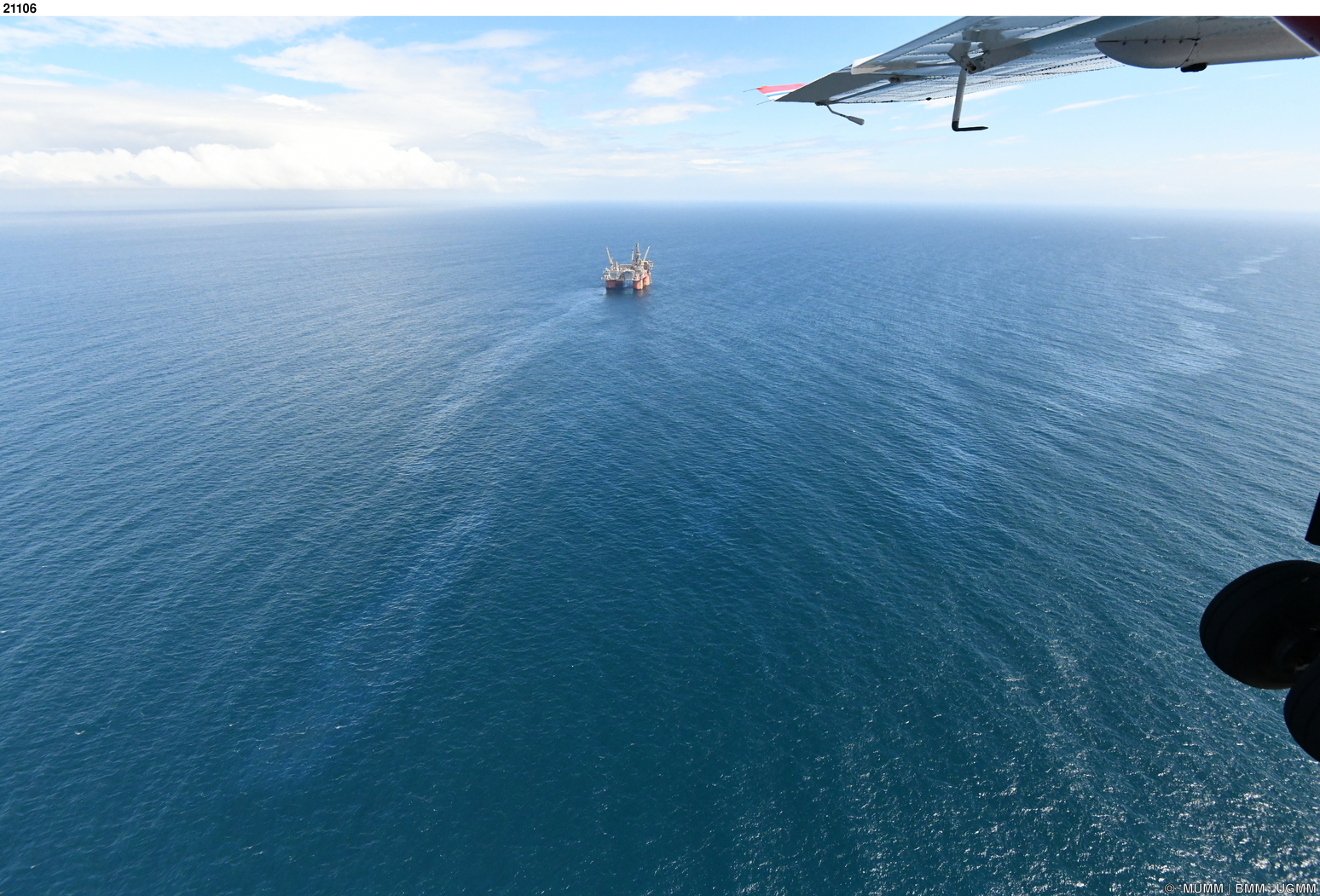
International “Super-CEPCO” mission
In 2021 the Belgian Coastguard aircraft also participated in an international Super-CEPCO (Coordinated Extended Pollution Control Operations) mission. During such a mission, surveillance aircrafts from different North Sea countries jointly carry out continuous surveillance over a certain (high-traffic) zone for several days. During the 2021 mission, hosted by Norway, planes from 6 North Sea countries gathered in Oslo to perform pollution control flights over the Skagerrak Strait for 3 days. On the flight to Oslo, the Belgian Coast Guard aircraft observed 1 operational MARPOL Annex II discharge in German waters and 1 small oil spill without polluter in the Oslofjord.
Monitoring of Marine Mammals
In 2021, RBINS conducted two surveys in Belgian waters to determine the distribution and density of harbour porpoises. Such surveys are also carried out in other North Sea countries in a standardized manner, in order to obtain long-term data that yield a bigger picture of the seasonal population dynamics of harbour porpoises (Phocoena phocoena) and other marine mammals in the North Sea.
As in 2020, the surveys in 2021 were conducted in June and September. An equal number of harbour porpoises were observed during both surveys: 52, including 4 and 9 calves respectively. The average estimated density in Belgian waters was higher during both surveys than in 2020: an average of 0.81 (0.52-1.28) and 0.78 (0.44-1.35) respectively for harbour porpoises per km² sea area, or in a total an estimation of 2700 animals.
Maybe more striking than the number of harbour porpoises was the number of seals: in June there were nine animals, including (based on size) at least one grey seal. In September, 20 seals were seen, of which (at least) seven were identified as grey seals, the highest number of seals ever recorded during an aerial survey.
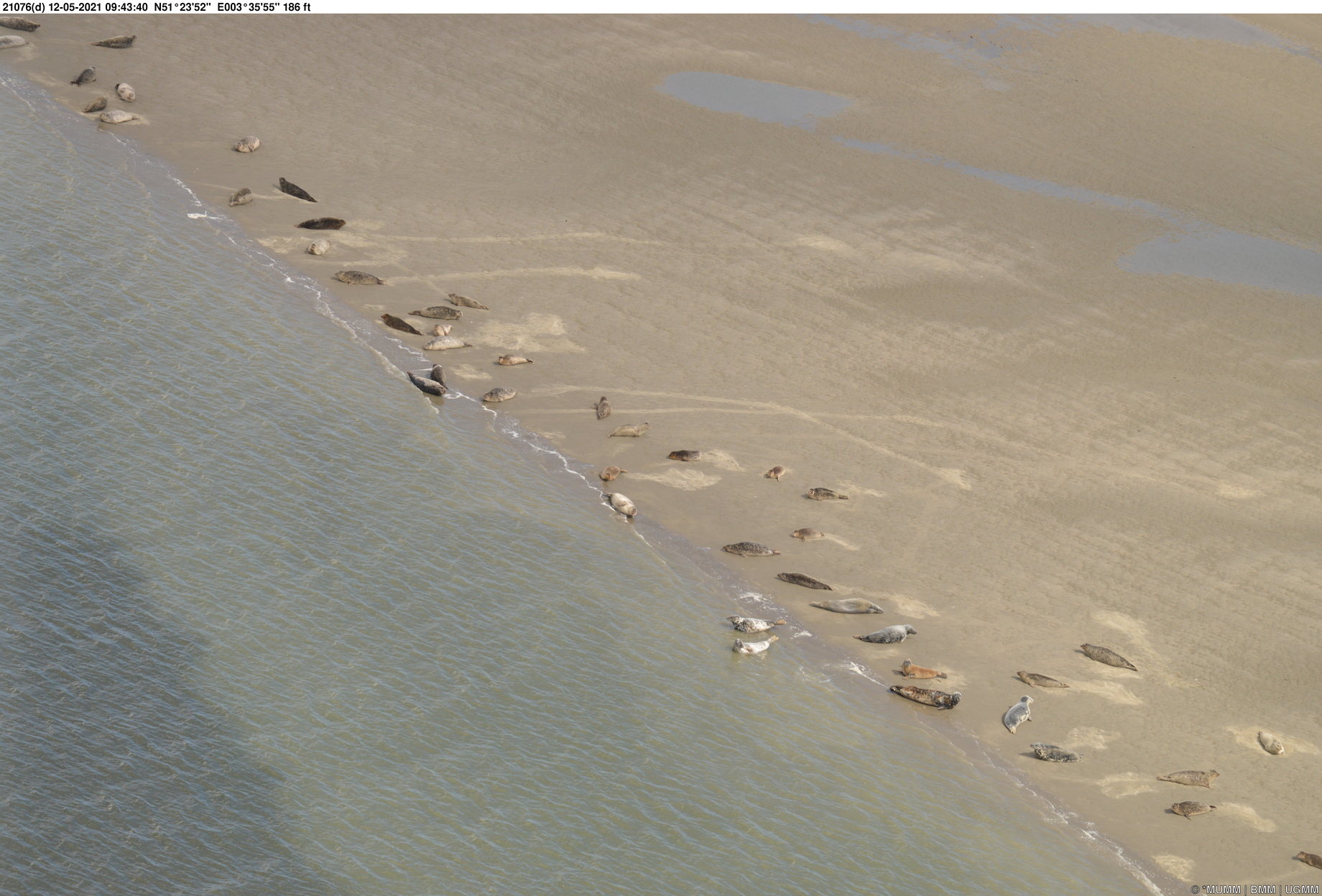
Emergency interventions: collision at sea and transmigration issues
On 13 March 2021, there was a minor collision between two ships in the Westhinder anchorage area. The ships involved were the XING ZHI HAI (bulk carrier) and the ASTREA (tanker). The later was at anchor. The Coast Guard aircraft was activated that day and confirmed that there was only minor damage to both ships and that there was no contamination.
The aircraft also regularly flies in support of the Coast Guard, also in areas for which the MUMM is not specifically authorized or the aircraft is not specifically equipped for. For example, the crew regularly documents various observations (other than environmental) that are systematically reported to the Coast Guard centers and authorized partner organisations. The surveillance aircraft was unfortunately confronted several times in 2021 with the increased transmigration problem in and around our waters.
On 27 October 2021, while the aircraft was in operations on the coast, it was called by Coast Guard Central Services to report that a small boat carrying transmigrants was in distress near the wind farms. The aircraft was able to take off quickly and was the first coastguard platform on site. It was able to inform the competent authorities about the situation.
It concerned a rubber boat with 24 people on board that was adrift towards the wind farms. The rescue helicopters from Koksijde and a Navy vessel then arrived on the scene and managed to bring all those on board to safety. Throughout the year, other observations linked to transmigration also took place, but without people on board, these usually concerned abandoned boats or life jackets.
